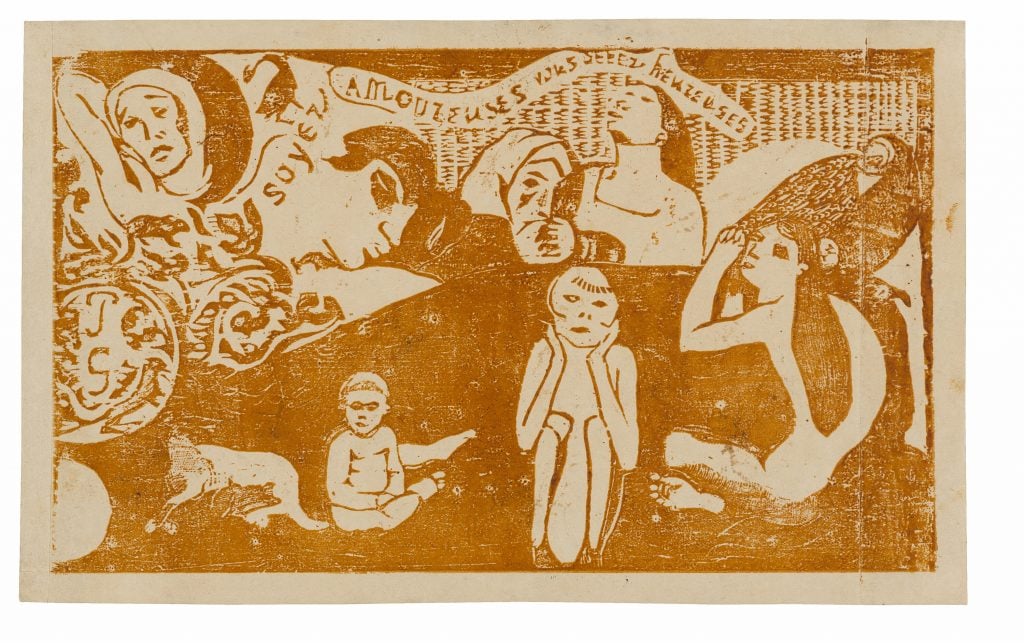Law & Politics
Notorious Forger of Renaissance Prints Sentenced
Some reports suggest Earl Marshawn Washington has been swindling art collectors for over 25 years.

Some reports suggest Earl Marshawn Washington has been swindling art collectors for over 25 years.

Jo Lawson-Tancred

A notorious forger of woodcut prints has been sentenced to over four years in prison for conspiracy to commit fraud. Earl Marshawn Washington, aged 61, has admitted to conspiring with various romantic partners to make and sell thousands of fake prints, according to a press release from the U.S. Attorney’s Office, Middle District of Pennsylvania.
Woodcuts are an archaic but popular printmaking method typically associated with the Renaissance era, that has enjoyed many revivals since. Washington passed off his counterfeit creations as historical artworks dating from the 15th century to the 20th century. Between 2018 and 2021, Washington collaborated with his then-wife Zsanett Nagy, a Hungarian woman aged 32.
Among the couple’s victims was a pair of collectors from France who agreed to pay nearly $85,000 for Washington and Nagy’s fake woodblocks. They believed they had acquired “15th.C Reformation/Lutheran wood blocks” and sold some on to a German collector who had intended to display them in a museum, according to court filings. The French collectors apparently realized that the woodcuts were forgeries after making the payment via PayPal. Nagy moved the payment to a bank account in her name and withdrew the entire amount in cash, in installments.
Washington pleaded guilty to regularly using his partners’ bank accounts to handle payments and to operating under the alias “River Seine” for a least a decade. Between 2013 and 2016, when Washington was collaborating with a different romantic partner, he defrauded a collector from York, Pennsylvania out of $118,810 for roughly 130 woodcuts. These were falsely advertised as being from the 16th and 17th centuries.
Washington was discovered thanks to the investigative work of the FBI’s dedicated Art Crime Team. Court filings show that Washington’s lawyer Lori J. Ulrich described her client as “complicated” and “his own worst enemy,” according to USA Today. However, Ulrich also tried to argue that at least some of Washington’s victims were themselves collaborators, claiming that the French collectors sent emails worded in a way that might suggest they knowingly commissioned the fakes.
One report in Forbes from 2004 seems to suggest that the Washington’s forgeries long predate 2013. He is described as operating a small studio in Michigan, out of which he had been selling tens of thousands of prints for as much as $350 since 1998. These works were attributed to his great-grandfather Earl Mack Washington and sold online or via small galleries, but the account of an ex-girlfriend has raised suspicions that this artistic ancestor never actually existed.
According to the release published this week by the U.S. Attorney’s Office, Washington and Nagy were indicted in January 2023. As part of Washington’s plea deal, the original charges of counterfeiting artistic goods were dropped and replaced with a charge of conspiracy to commit wire fraud and male fraud. On top of 52 months in prison he must pay a total of $203,240.90 to the victims of his counterfeiting conspiracy.
Nagy pleaded guilty to the same charges and the additional charge of money laundering. In January, she was sentenced to time served, followed by two years of supervised release. She must also pay $107,159.25 to compensate the victims and, as a Hungarian citizen, faces potential deportation.